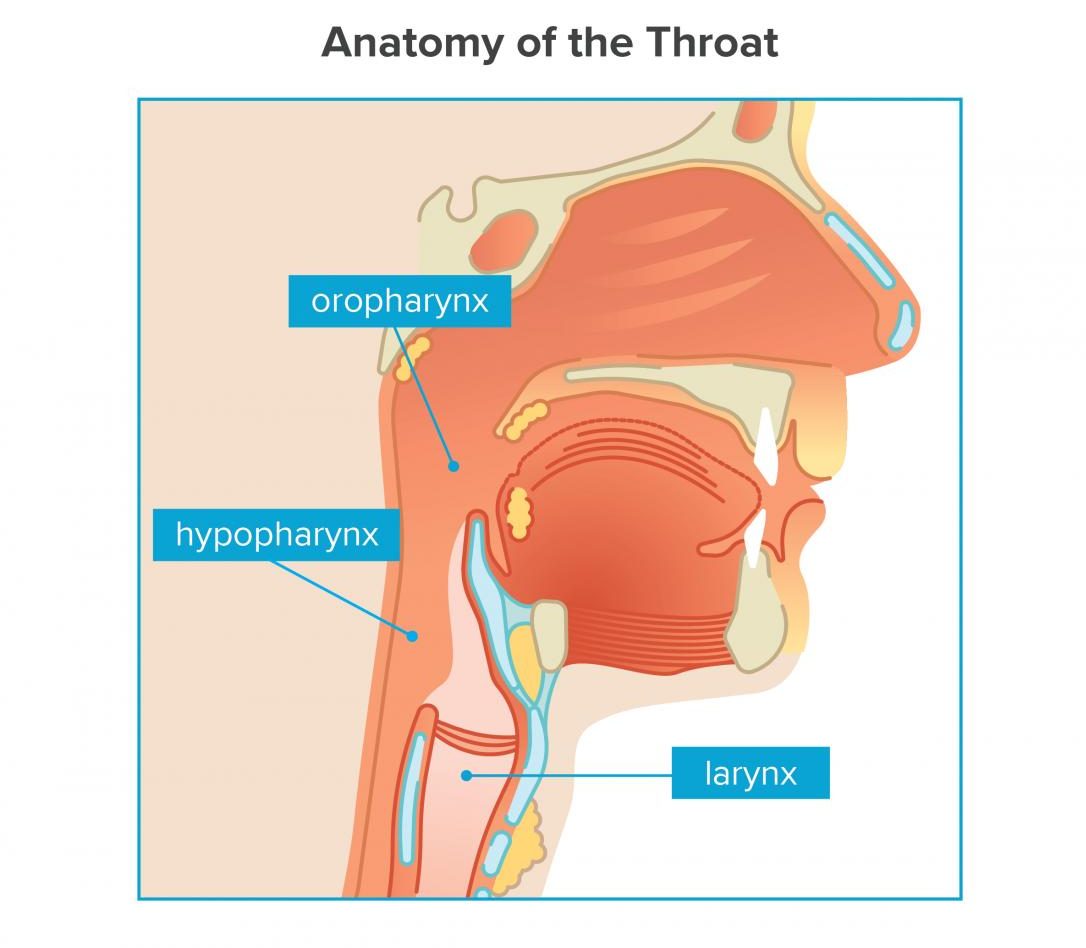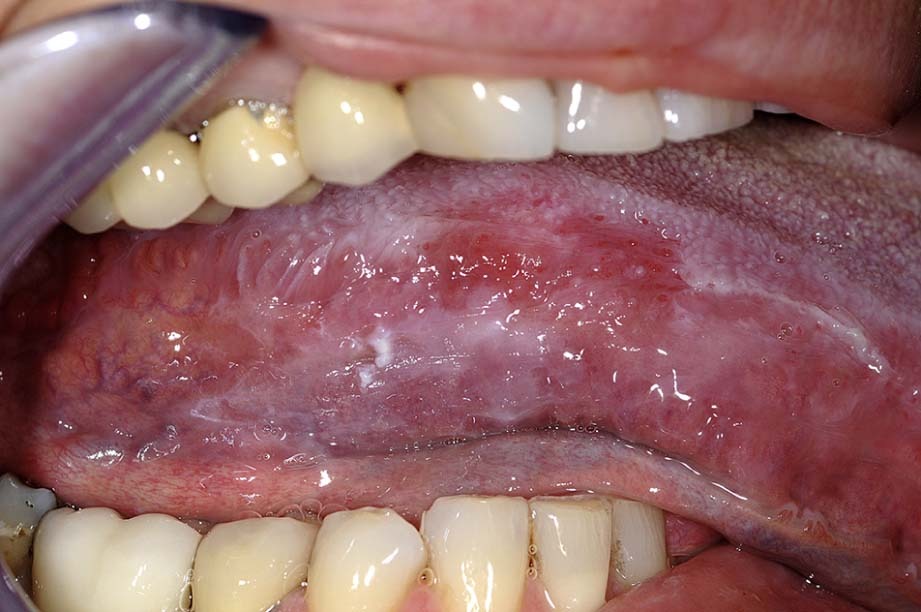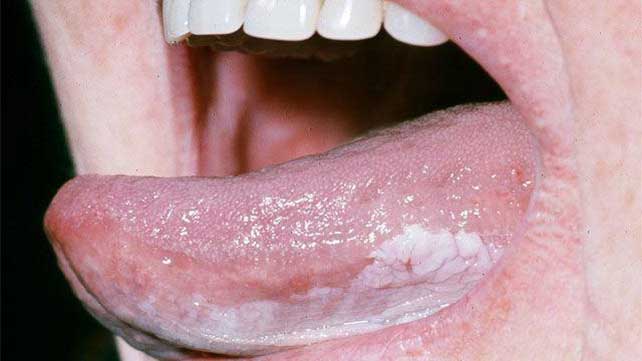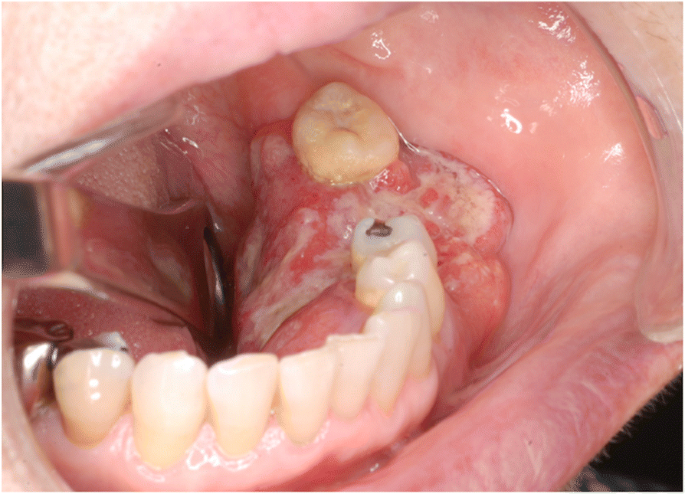Throat cancer develops when cells in a portion of the throat proliferate uncontrollably. Treatment is possible, but the outlook is dependent on the stage of cancer and how quickly a person receives a diagnosis.
Throat cancer can affect the larynx (voice box) and either the upper or lower region of the pharynx. As cancer spreads, it has the potential to invade surrounding tissues. The name of the cancer, on the other hand, will always be determined by where it begins.
Throat cancer is classified as a head and neck cancer by the National Cancer Institute (NCI). Oropharyngeal cancer and mouth cancer share several characteristics. It has the potential to impact both adults and children.
According to the National CancerInstitute, cancer of the throat or mouth accounts for only 1.8 percent of all cancer fatalities. According to the American Cancer Society’s (ACS) most recent projections, there will be approximately 12,620 new instances of throat cancer diagnosed in 2021, with approximately 3,770 fatalities due to the disease.
Adults who are exposed to tobacco and the human papillomavirus (HPV) are more likely to develop throat cancer.
This article will discuss some of the most common symptoms, forms, causes, and treatments for throat cancer, as well as the outlook for those who have been diagnosed.
Causes and risk factors
Experts aren’t sure what causes throat cancer, although certain variables appear to raise the chance, such as:
- family history of head and neck cancer
- exposure to some materials, including asbestos or acid mists produced during certain types of manufacturing
- alcohol use exceeding 1 drink per day
- male sex assigned at birth
- being older than 40 years
- gastroesophageal reflux disease (GERD)
- HPV infection, which can increase the risk of many types of cancer
- tobacco use, including smoking or using chewing tobacco
- poor nutrition and vitamin deficiencies
According to the ACS, smoking cigarettes and alcohol together increases risk enormously. Here are some suggestions for quitting smoking.
Symptoms
There are various forms of throat cancer, and cancer can grow in a variety of locations within the throat. The type and location of the cancer will determine the symptoms and progression.
Early signs and symptoms of throat cancer include:
- a persistent sore throat or cough
- voice changes, especially hoarseness or not speaking clearly
- swollen lymph nodes
- pain or difficulty when swallowing
- ear pain
- a lump in the neck or throat
A person with cancer of the hypopharynx, or lower region of the throat, may not have any symptoms in the early stages. This can make it more difficult to detect.
These symptoms can be caused by a variety of illnesses. If they persist or become severe, though, a person should seek medical attention to rule out a dangerous condition.
Pictures
Types
The pharynx (the tube that connects the back of the mouth to the windpipe) and the larynx (the region of the throat that contains the voice box) have numerous parts. Cancer can develop in any of these areas.
Pharyngeal cancers
- Nasopharyngeal cancer: This kind of pharyngeal cancer affects the top section of the pharynx, behind the nose.
- Oropharyngeal cancer: The back of the mouth and the central region of the pharynx are affected by this type. Tonsils, tongue base, and soft palate can all be affected. This is the most frequent type of pharyngeal cancer, according to Memorial Sloan Kettering Cancer Center.
- Hypopharyngeal cancer: This form of pharynx cancer affects the bottom section of the pharynx.
Laryngeal cancers
Any part of the larynx can develop cancer, including:
- supraglottis, the area of the larynx above the vocal cords that includes the epiglottis
- glottis, the middle area of the larynx that contains the vocal cords
- subglottis, the lowest area of the larynx, extending from the vocal cords to the windpipe
The NCI states that throat cancer commonly originates as squamous cell carcinoma. This indicates that cancer begins in the squamous cells lining the throat. This sort of cancer can also start beneath the nose or in the mouth, according to the institute.

Diagnosis
Early detection of throat cancer considerably improves the chances of successful therapy.
A doctor will inquire about the patient’s symptoms and do a physical examination. To examine the inside of the throat, they may use a laryngoscope, which is a tube with a camera attached to it.
Other imaging tests, such as an X-ray, CT scan, or MRI scan, can assist the doctor in confirming a diagnosis and determining the extent of the cancer’s spread.
A biopsy may be recommended by a clinician. This entails collecting a sample of throat tissue or cells to be tested in a lab for cancer. A biopsy will also reveal the type of cancer that has been found.
These tests will aid the doctor in determining the cancer’s extent and the best treatment options.
Staging
The term “staging” refers to the process of determining how far cancer has spread. The type of throat cancer will determine how it is staged.
Doctors usually divide cancer stages into the following groups when it comes to throat cancer:
- Stage 0 (also called in situ): Abnormal cells have formed that have the potential to become cancerous.
- Stage 1: The tumor is smaller than 2 centimeters (cm) and has not spread to the lymph nodes.
- Stage 2: The tumor is between 2 cm and 4 cm and has not spread to the lymph nodes.
- Stage 3: The tumor is larger than 4 cm or has spread to a small nearby lymph node.
- Stage 4: Cancer has spread to nearby tissue; to larger or more distant lymph nodes; or to other parts of the body, such as the lungs.
Treatment and outlook are also influenced by the cancer’s grade. A high-grade cancer is more aggressive than a low-grade cancer, which means it will grow faster.
When a doctor determines the stage and grade of cancer, they will discuss treatment options with the patient.
Treatment
Treatment will be determined by a number of factors, including:
- the location, stage, and grade of the cancer
- the age and overall health of the individual
- the availability and affordability of treatment
- personal preferences
Common treatments for throat cancer include:
- Surgery: A surgeon will remove the tumor and other cancerous tissue. This may affect the shape and function of the voice box, the epiglottis, and other structures.
- Laser surgery: This may be an option in the early stages.
- Radiation therapy: Targeted doses of radiation aim to kill the cancer cells.
- Chemotherapy: Drugs aim to target and kill cancer cells.
- Targeted therapy: These drugs attack specific cancer cells or proteins that affect cancer growth. This type of treatment aims to reduce the risk of adverse effects by targeting specific cells and not healthy ones.
- Immunotherapy: This is a new approach that boosts the immune system’s ability to defend the body against cancer.
Doctors frequently recommend a mix of treatments. Radiation and chemotherapy, for example, might have unfavorable side effects. The majority of problems, however, go away once treatment is over.
People who have throat cancer should talk to their doctors about what to expect and how to deal with any side effects that may arise.
Clinical trials
Some people decide to participate in a clinical trial. This could open the door to novel treatments that aren’t yet readily available. Only if experts have solid proof that a treatment is likely to be safe can a clinical trial be conducted. A person should discuss the possibility of participating in a clinical study with their doctor or care team.
Life during treatment
Treatments for throat cancer might cause in a variety of unpleasant side effects and lifestyle adjustments.
Tiredness
Chemotherapy and radiation therapy, for example, can cause extreme weariness. The following are some suggestions for managing one’s energy levels:
- Planning days around how they feel: If the person has more energy in the morning, for example, they can plan to be active at that time and rest later.
- Prioritizing important tasks first: When a person does have energy, they should focus on their most important tasks first. They should rest when they feel tired and not push themselves to the point of exhaustion.
- Mild exercise: A 15–30-minute outdoor walk can boost a person’s energy levels and sense of well-being.
Mouth and teeth symptoms
Radiation therapy to the throat is used to cause cancer cells, however it can also have negative side effects, such as:
- weakening of teeth
- voice hoarseness
- skin discoloration
- sores or pain inside the mouth
- changes in taste
- dry mouth
A person can engage with their health-care team to take steps that may assist to mitigate these side effects.
Breathing problems
Radiation therapy-induced inflammation can make breathing difficult. Surgical operations that remove part or all of the larynx, according to the National Health Service (NHS) in the United Kingdom, might cause breathing difficulties as the area recovers.
Doctors will work with a patient to make breathing easier, which may include the placement of a temporary tracheostomy tube.
Change or loss of voice
Some throat cancer operations might cause a person’s natural voice to be lost. Doctors will review a person’s speech-recovery options, which may include voice prosthetic.
Physical changes after surgery
A person’s throat, tongue, jaw, and other components may require major surgery depending on the type and extent of throat cancer. The look and function of these structures can be restored with reconstructive surgery, although there is a risk of consequences.
People who have surgery that alters the structure of their mouth or throat may require rehabilitation in order to talk and swallow properly. Speech and occupational therapists may be part of a cancer care team, and they may work with a patient to help them improve or restore abilities that have been affected by surgery.
Doctors will work with you to decide the best surgical option for you and what to expect afterward.
Emotional symptoms
According to one study, roughly one-fifth of people who received therapy for head and neck cancer developed depression thereafter. These people had a worse outlook than those who did not suffer from depression.
Anyone who is experiencing signs of depression, anxiety, or other persistent symptoms should speak with their doctor about counseling or support groups that are available.
Follow-up
Following cancer treatment, a person will continue to have appointments at regular intervals. The doctor will keep track of their progress and make sure the cancer hasn’t returned.
It is important to attend all follow-up appointments and to inquire about any symptoms that persist with the doctor. Any recurrence or new cancer will be detected and treated earlier as a result of this.
Outlook
The prognosis for throat cancer is determined by the stage, kind, and location of the cancer. Experts construct a 5-year relative survival rate based on historical data, which is an estimate of the likelihood that a person will live for at least another 5 years after being diagnosed with cancer.
The American Cancer Society (ACS) estimates 5-year relative survival rates using data from the National Cancer Institute’s (NCI) SEER database. The ACS provides the following 5-year relative survival statistics for people diagnosed with throat cancer between 2010 and 2016 when all SEER stages are taken into account:
| Type of throat cancer | 5-year relative survival rate (all stages combined) |
| Laryngeal (supraglottis) | 46% |
| Laryngeal (glottis) | 76% |
| Laryngeal (subglottis) | 52% |
| Hypopharyngeal | 32% |
It’s important to remember that these projections aren’t indicative of a person’s own outlook. Researchers may have also created new treatments since these investigations were conducted. A person’s outlook will be assessed by their doctor in light of their diagnosis, medical history, and treatment plan.
Conclusion
There are several forms of throat cancer, each with its own prognosis. In the vast majority of cases, early detection means a better likelihood of effective treatment.
Symptoms include a chronic sore throat or cough, swallowing difficulties, and changes in voice. These symptoms could also be signs of other illnesses, therefore a person should consult a doctor for a proper diagnosis.
There are treatments available, but they can have unpleasant side effects. To assist minimize side effects and maintain quality of life, a person should discuss with their doctor.
The risk of throat cancer can be reduced by quitting smoking and minimizing alcohol use.
Sources:
- https://www.ncbi.nlm.nih.gov/pmc/articles/PMC5055342/
- https://www.cancer.gov/types/head-and-neck
- http://www.cancer.gov/types/head-and-neck/head-neck-fact-sheet
- https://www.cancer.gov/about-cancer/causes-prevention/risk/infectious-agents/hpv-and-cancer
- https://www.cancer.gov/types/head-and-neck/patient/adult/hypopharyngeal-treatment-pdq
- https://www.cancer.org/cancer/laryngeal-and-hypopharyngeal-cancer/about/key-statistics.html
- https://www.hopkinsmedicine.org/health/conditions-and-diseases/laryngeal-cancer
- https://www.medicalnewstoday.com/articles/312087
- https://www.cancer.gov/types/head-and-neck/patient/adult/laryngeal-treatment-pdq
- https://www.cancer.org/cancer/oral-cavity-and-oropharyngeal-cancer/after-treatment/follow-up.html
- https://www.cancer.gov/types/head-and-neck/patient/adult/oropharyngeal-treatment-pdq
- https://www.sciencedirect.com/science/article/abs/pii/S1368837516302573?via%3Dihub
- https://www.cancer.gov/about-cancer/treatment/clinical-trials/search/trial-guide
- https://www.mskcc.org/cancer-care/types/throat/throat-cancer-diagnosis/throat-cancer-stages
- https://www.nhs.uk/conditions/laryngeal-cancer/treatment/
- https://www.mskcc.org/cancer-care/types/throat/types-throat









